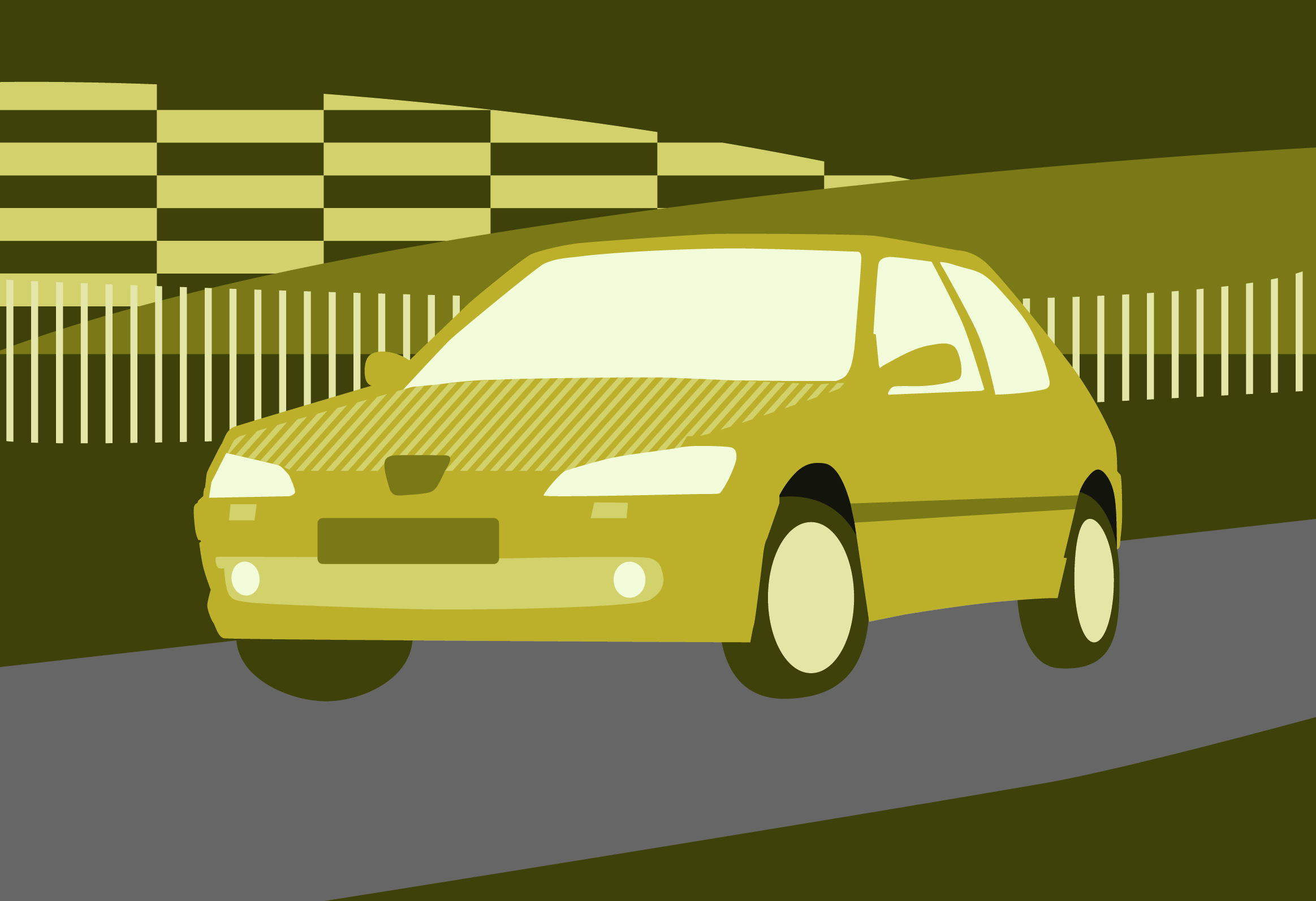If there’s one car-maker which knew how to hit the hot-hatch sweet spot in the 80s and 90s, it was Peugeot.
There was the raucous brilliance of the 205 GTi 1.9-litre, its awkward-looking but awesome big brother the 309 GTi, and the manic little 106 Rallye.
But the 306 GTi-6, launched in 1996, and the stripped-down, limited edition 306 Rallye, might just have been the best of the bunch for all-round greatness.
The handsome Peugeot 306, styled – like the 205 – by Pininfarina, was a significant improvement on the stodgy-looking 309 it replaced.
Launched in March 1993, the 306 got favourable reviews as a nimble and fun drivers’ car, almost identical under the skin to the Citroen ZX, but wearing much prettier clothes.

Standard models used the TU 8-valve engines, with the 1.6-litre proving a popular and flexible unit suitable for most drivers’ needs.
But it’s with the larger engines, the XU-generation 2-litre units – a development of the 1.9-litre engine seen in the 205 GTi – where things got interesting.
With GTis falling out of favour as insurance premiums soared, Peugeot called the 306 performance models the XSi and S16.
The XSi used an 8-valve version of the XU engine, with a 16-valve head turning it into the S16.

Despite the less evocative badging, the 123bhp XSi could show the Golf GTi 8V of the time a clean pair of heels, while the twin-cam S16 pumped out an impressive 155bhp.
In October 1994, CAR magazine praised the XSi’s “kart-like niftiness”, its “mildly intoxicating verve”, and “sharp, uplifting handling”.
Pitched against the Golf and the new BMW 316i Compact, the magazine wrote that the Pug was “the only car here that should be wearing a GTi badge (but don’t tell the insurers)”.
Despite the horsepower deficit, most reviewers at the time considered the XSi a better car than the S16, including CAR.

“It has been said before but it’s worth repeating: the agile XSi offers more unbridled fun than its senior sibling, the muscle-bound S16,” it said. “There’s a wonderful fluidity to its cornering. It squats all square and turns in decisively, without the knife-edginess that made the 205 GTi so hyper-sentive.”
Enter the Peugeot 306 GTi-6
There were two chief complaints about the Peugeot 306 XSi and S16.
For the XSi, its sprint gear ratios emphasised the car’s zest, but denied it decent motorway legs – a sixth gear was needed.
Meanwhile, the extra power of the S16 was partly negated by its extra weight, and the 16-valve unit was said to be coarse and thrashy at higher speeds.
Peugeot solved both of these issues, and then some, with the 306 GTi-6 introduced in 1996.

Yes, the GTi badge was back – it was officially OK to have fun again.
Power was up from the S16, the reworked 16-valve 2-litre powerplant now producing 167bhp, with peak torque up 10% to 145lb ft, albeit at higher revs.
This smoother and more flexible engine was given lighter internals, a new alloy cylinder head, harmonically optimised inlet and exhaust plumbing, along with Magneti Marelli’s latest sequential ignition and twin-jet fuel-injection system.
The clue as to what really made the GTi-6 different was in the name – a new six-speed gearbox developed by Peugeot’s motorsport division, a first in the hot hatch arena.
Adrian Flux Classic Car Insurance
Top gear was significantly taller than in the old car’s five-speed box, providing far more relaxed high-speed cruising, but Peugeot had retained its predecessor’s racey nature by closing up the lower ratios for maximum performance.
The XSi and S16 already handled supremely, so there was no need to meddle with the chassis or suspension (front struts and rear torsion-beam).
Inside, the GTi-6 came with dark leather and alcantara trimmed seats, while its ‘Cyclone’ alloys were shod with 195/55 VR 15-inch tyres.
Peugeot 306 GTi-6 on the road
After the boy-racer flamboyance of the ‘80s the GTi class came of age in the ‘90s, and there was no better example of the new, grown-up hot hatch than the classy Pug.
Out went extravagant graphics and spoilers – this was a drivers’ car, and not one for posers.
Apart from anything else, crash regulations meant we would never again see a new car as light and lively as the Peugeot 205 GTi.
And those buying hot hatches as the ‘90s wore on had a new set of priorities that the 306 and rivals like the Golf needed to address.

As Richard Meaden wrote in Performance Car magazine in September 1996, “the GTI-6 isn’t a flimsy, bare necessities kinda car”.
“Peugeot realises that hot hatchers now have more sophisticated tastes,” he added. “Most of them are going to be old gits for a start, which is why it comes with air conditioning and other heavyweight creature comforts.”
Meaden was hugely taken with the GTi-6, describing it as “quite simply, the biz”.
It could be both “refined mile-eater” and “boisterous road-racer”, depending on your mood, while the new engine was “16-valve head and shoulders above the old S16 unit – smooth where the other was harsh, torquey where it was flaccid”.
“Silky and strong from idle to red line, it develops a hard-edged Williamsesque growl at the top end,” he wrote.
“(It’s) the best new hot hatch money can buy. The GTI-6’s strength comes from its depth and range of abilities. Buy one, and you’ll have a bloody good time, all of the time.”
At £16,675, the GTi-6 wasn’t cheap, about the same price as the Golf GTi 16V, but it fully deserved to be in that bracket.
Exhilarating 306 GTi-6 handling
As well as the strong engine, the Peugeot 306 GTi-6 scored top marks for its handling and gearchange from road testers.
According to Meaden, “no other hot hatch has the magical combination of pointy, confident turn-in, unflappable traction and exhilarating mid-corner adjustability”.
Meanwhile Autocar, reviewing the Peugeot in December ‘96, said the gearbox was even more impressive than the engine.

“The gearchange is so precise and smooth that you find yourself changing gear for the hell of it,” it wrote.
“Peugeot has always been the boss of hot hatch handling, knowing just what the keen driver wants and providing it. It’s fanciful and unrealistic to keep looking for the 205 GTi’s successor, but the 306 GTi-6 is as near as anyone has got so far.”
There was some disagreement among testers about the 306 GTi-6’s performance, ranging from the 0-60mph of 7.8 seconds achieved by Autocar, to up to 8.5 seconds elsewhere.
Whatever the exact timing, Auto Trader gave it 10/10, describing its pace as “torrential”.
“There’s good pull from low speeds, but above 4,500rpm these 306s really fly,” it added. “It offers unrivalled entertainment in its class.”
Stripped down Peugeot 306 Rallye
How to make the 306 GTi-6 even more fun to drive? Strip it down and call it a Rallye.
Peugeot had successfully pulled off this trick before, with the 205 and 106, and the 306 Rallye was the ultimate version – as long as you were happy with a no frills experience.

The 167bhp engine was exactly the same, but out went the GTi-6’s fog lights, air conditioning, sunroof, electric windows, temperature sensor, and some sound deadening material.
It all added up to a weight loss of about 65kg, allowing the Rallye to rocket to 60mph in under 7 seconds.
As a bonus, it came in at just £15,990, a £2,500 drop from the GTi-6’s asking price.
Just 501 were made, all for the UK market, and they came in three solid colours – 100 black, 200 cherry red, and 200 bianca white, and one blue, all marked out with the same yellow, blue and red Rallye flashes that featured on the 205 and 106.
Interior trim was similarly austere, with the leather and Alcantara seats replaced by a special Rallye cloth, and the steering wheel made from cheaper plastic.
Unlike previous Rallyes, which used white steel wheels, the GTi-6’s five-spoke alloys remained in place.
Rave reviews for Rallye
The press loved the Rallye, with evo acclaiming its “five-star performance” on a road test in January 1999.
A “healthy, guttural roar” provides the soundtrack to enthusiastic acceleration, while the “chassis filters out all of the distractions and feeds back delicate information through the rim of the wheel and copious notes through the seat of your pants”.

CAR magazine’s Brett Fraser enthused that the Rallye “outclasses the (Golf) 16v, and outruns it, too”.
“It bubbles and fizzes with life and energy, always the sports car, forever the entertainer,” he added. “It punches viciously from as low as 3,000rpm and wails around to its seven-two red line with even greater determination than the 16v.
“Yet it’s not all show and easy gratification; it has real depth. Thunder down a bumpy road and the suspension will filter out the sting and bang of each lump and pothole.”
All in all, the bare bones Rallye was an absolute blast, serving up the GTi-6’s potent driving experience for much less cash.
If you’re lucky, you can get your hands on one for between £10,000 and £15,000 today.
GTi-6 revamp
The whole 306 range underwent its only revamp in 1997, with revised lights, grille and bumpers to bring it into line with the new Peugeot family look of the 406.
Inside, the dash was upgraded with a digital odometer and better quality trim.
And the GTi-6 marched on, winning the What Car? hot hatch of the year award for 2000, as it had in 1998.
The only reason it didn’t win in 1999 was because the 306 Rallye did…
No hot hatch gave the same “blend of performance, practicality and unabated driving excitement” as the 306, wrote the magazine.
“The 306 GTi-6’s piercing ability as a hot hatch is what makes it our choice,” it added. “An engine that thrives on revs and hard use coupled to a closely stacked six-speed box keeps the GTi-6 constantly on the boil.
“But this is no edgy prima donna in traffic, the 306 will ease through city streets without murmur and refuses to rattle your fillings over flawed city roads.”
The 306 GTi-6 was still at the top of its game when Peugeot pulled the plug midway through 2000, as the 306 model gave way to the 307 for 2001, with no GTi badge in sight.






